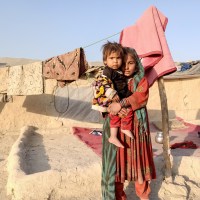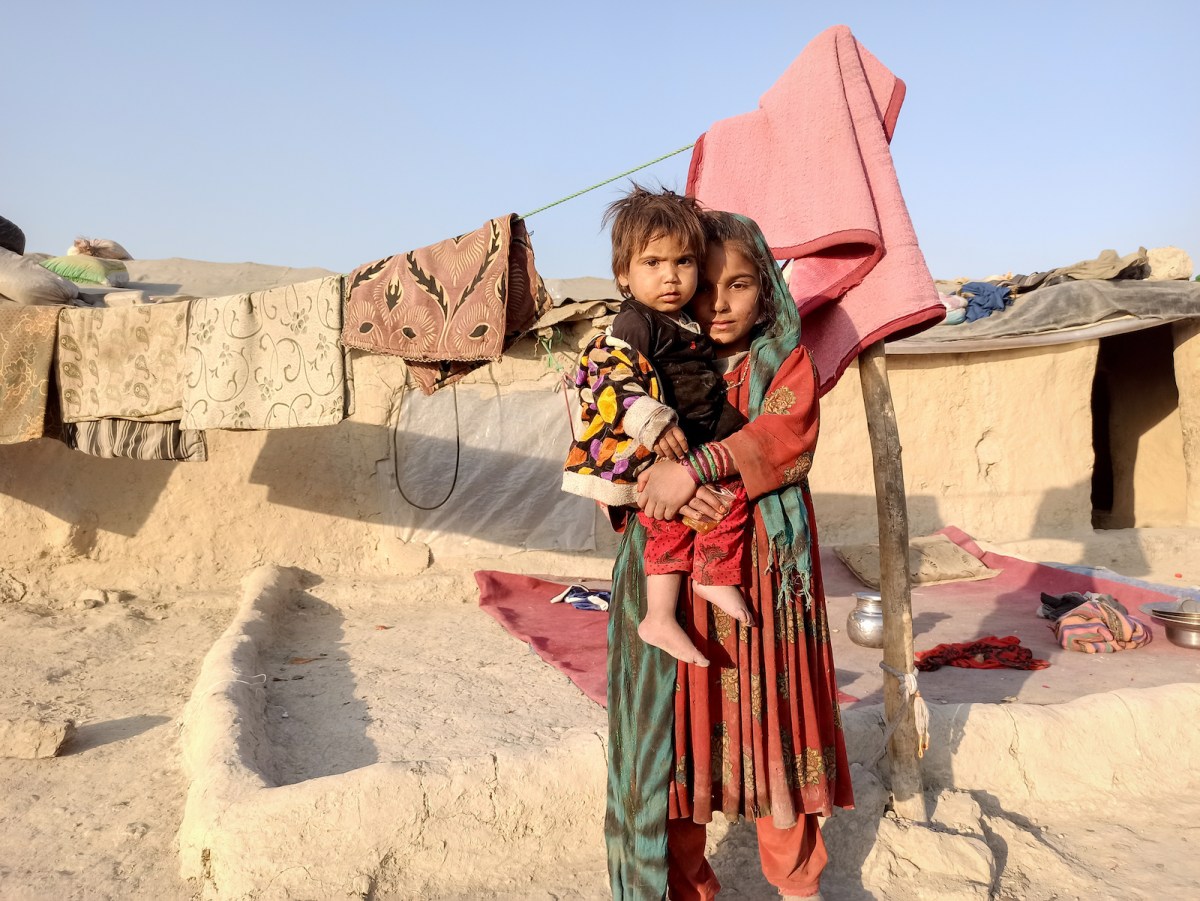Your daughter is sick with a life-threatening case of pnuemonia and you need to buy some medicine. You have money in the bank, but none of the banks are open in your village, in the next one, or in the next one. You spend your last four dollars on a taxi to the city, where you wait in line alongside hundreds of others trying to withdraw their hard-earned money too. The bank shuts its door and implores you to go home, for it has run out of cash.
In cities across Afghanistan, residential streets turn into ad hoc flea markets as families lug their dining room tables and chairs onto the pavement, the tables covered with pots and pans, and forks and knives, all for sale. Across the street, someone sets out his stove. His neighbor peddles a big brown leather couch. A professor displays the textbooks he uses to prepare his lectures. All over the country, people are selling off pieces of their lives to survive.
Today, Afghan banks have run out of cash. More than 22.8 million people, over half the population, face acute hunger. Over one million children face severe malnutrition. What has caused this catastrophic crisis?
Drought
70% of the Afghan population lives in rural areas, where farming is the main livelihood and supports 75% of the total population. Before the Taliban takeover, Afghan farmers were facing their worst drought in decades. Wells and irrigation channels had dried up, thereby reducing harvests. An estimated 2.5 million tonnes less of wheat were harvested in 2021. As a result, there aren’t any stores of wheat to help people survive the winter.
War
In the months leading up to the Taliban takeover, military campaigns destroyed many rural areas, farms, and towns. Hundreds of thousands fled for safety. When they returned, they found their business had been looted and their homes had been destroyed. While they were displaced, they couldn’t plant their harvests. Wheat is the most important food crop in Afghanistan, and most cereals are grown for self-consumption. Because wheat was not planted, most people now need to buy bread, which has doubled in price, and most people cannot afford it.
The US Withdrawal
For the past twenty years, the US intervention powered the Afghan economy. Industries, such as contracting, fuel procurement, trucking, and security, prospered as long as the US war effort continued. These industries employed millions, whose jobs disappeared when the US military withdrew from Afghanistan. Millions were left unemployed.
The Afghan Banking System
Because the US dollar is a globally trusted currency, and the Federal Reserve Bank of New York is a trusted financial institution, many countries hold their state’s assets at the Federal Reserve in New York. Former Afghan President Ashraf Ghani was no different, depositing $7 billion of its nearly 9 billion in state assets there. (The World Bank holds approximately $2 billion, which the US has ordered to keep frozen, for Afghanistan’s public health care system and other public services.) This money also served as the main funds of the Afghan central bank.
The Afghan economy depends on a flow of physical cash. As a result, the Ghani government used to fly in pallets of shrink-wrapped US dollars to keep cash flowing in the economy, and the economy functioning. When the Taliban took over the country, the US froze those assets and stopped flying millions of dollars into Afghanistan. The US government maintains that the Afghan money held at the Federal Reserve belongs to Ghani’s government, which collapsed. It also does not recognize the Taliban as a legitimate government because several Taliban leaders have been designated as terrorists. Freezing Afghan assets is meant to sanction Taliban leaders, but it has strangled the Afghan banking system. As a result, local banks throughout the country do not have any more cash on hand. Families cannot withdraw their savings to buy food and medicine because of the cash shortage.
Western Donor Aid
Under Ashraf Ghani’s government, 75% of Afghanistan’s budget was funded by Western donors. This aid, which comes from the US, the European Union, the UN and others and totals billions, paid for teachers’ salaries, for doctors and nurses, thus keeping hospitals and schools open.
When the Taliban seized power, the US government pressured the International Monetary Fund and the World Bank, which held about 2 billion in aid earmarked to keep Afghanistan’s health care system and other public services running, to freeze this money. At the same time, aid organizations, such as the UN, which have their own money, couldn’t get aid dollars into Afghanistan because the banks which usually transfer their funds cut their ties to Afghan banks. These intermediary banks feared US sanctions or fines if they helped transfer aid dollars into Afghanistan. Finally, in December 2021, President Biden loosened restrictions on humanitarian aid organizations to provide relief in Afghanistan while still keeping Afghan foreign reserves frozen. UN Security Council resolution 2615 allows humanitarian aid organizations to provide life saving assistance, thus enabling NGOs to legally operate inside Afghanistan.
Factors beyond Afghan families’ control have put them on the brink of mass starvation. Our community of peacemakers has mobilized, delivering much needed food aid through our local partners. This month, we look forward to highlighting some of this work. Learn more about our response to the Taliban takeover of Afghanistan.


